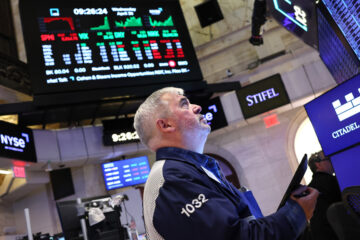The S&P 500 could fall 15%, but fundamentals are strong enough to prevent a sharper decline, Oxford said.
Stocks may fall further, but fundamentals point away from a plunge, says David Grosvenor, director of macro strategy for Oxford Economics.
There’s some more room on the downside, “as investors grapple with a more hawkish Fed and slowing earnings momentum,” he wrote in a commentary.
“However, we do not think it is the beginning of a new bear market, and we remain modestly overweight on global equities over our tactical horizon, albeit with a relative underweight on the growth-heavy U.S. market.” Bear markets are drops of more than 20%.
The S&P 500 has slid 6% from its Jan. 4 record intraday high.
“So how much further could equities fall?” Grosvenor asks. “Over the past 60 years, the average S&P 500 drawdown of greater than 10% is 21%.” But excluding recessions, that average dips to 15%, “with very few episodes resulting in bear markets, and most seeing a relatively swift recovery,” he said.
“Given that a recession appears unlikely at this time, with global growth forecast to remain above trend this year, we see this lower average as the more useful guide to the potential scale of the decline.”
Grosvenor says companies are in good shape. “Top-line growth is likely to remain robust against the backdrop of the ongoing global economic recovery and, in aggregate, corporate balance sheets appear in better condition today than they were at the onset of the pandemic,” he said.
“Companies have built up large cash balances, have extended the maturity of their debt and lowered their effective interest rates.”


